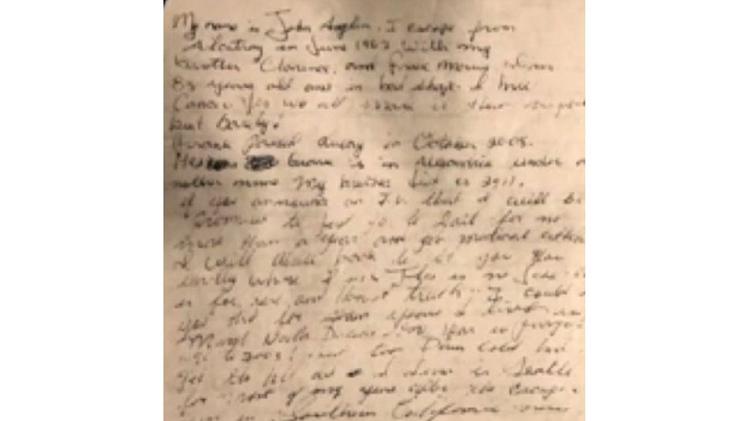Three bank robbers proved that Alcatraz’s security could be breached.
In 1934, the US model prison was established on a small island in the North Pacific.
It was so isolated that it would have been impossible for the detainees to cross the waters of San Francisco Bay and survive an escape attempt.
However, on the night of June 11, 1962, John Anglin, Clarence Anglin and Frank Morris tried their luck at escaping.
They used hair, toilet paper and soap to make doll heads, and covered them with blankets to pretend they were sleeping. Then they escaped from their cells through a tunnel they had been digging for months with a spoon.
According to FBI documents, the inmates built an inflatable raft with raincoats and jumped into the water between 8 p.m. and 2 p.m.
Despite search efforts, the men were never found.
Also known as “The Rock,” Alcatraz ceased to be a maximum security prison in 1963, a year after the escape.
The BBC tells three unknowns about the unsolved case 60 years later.
What happened to the prisoners who escaped from Alcatraz?
Officials said at the time the three fugitives had no way of surviving in the icy waters of San Francisco Bay, but today triathletes swim this section without issue.
The FBI closed the investigation in 1979.
But San Francisco police received a letter that one of them allegedly wrote in 2013, which was leaked to the American press and public five years later.
“My name is John Anglin,” the letter begins. “I escaped from Alcatraz in June 1962. Yes, we all survived that night, but barely!”
The author of the letter claims that three of them survived and reached old age.
The alleged John Anglin alleges that Morris died in 2005 and his brother Clarence in 2008.
The person who signed the letter even offers a deal to the authorities: “If they announce on TV that they’ve promised me only one year in prison and that they’re going to give me medical attention, I’ll write back to tell them exactly where it is. Me.”
“I’m 83 years old and not physically well. I have cancer,” she adds.
According to the letter, John Anglin lived most of his life in Seattle, Washington and spent eight years in North Dakota.
Is the letter real?
The U.S. Police Department, which has handled the case since 1979, sent the letter to an FBI lab for forensic analysis of the handwriting.
“Samples of the handwriting of the three fugitives, John Anglin, Clarence Anglin and Frank Morris, were compared to the anonymous letter and the results were inconclusive,” the service said in a statement.
When police received the letter, John Anglin claimed he lived in Southern California.
To date, three fugitives are on the most wanted lists, and authorities have released photos of what they might look like when they’re older.
‘Who sent the flowers?’
The Anglin brothers’ nephew, David Widner, told CBS that his grandmother received flowers with cards signed by John and Clarence a few years after the escape.
The letters have not been evaluated for authenticity by any authority.
“The truth is, I couldn’t come to a conclusion whether John wrote it or not,” said David Widner.
Regardless of the authenticity of the document, his niece was horrified that the letter was not delivered to the family.
“Since she said she has cancer and is dying, I think they should at least reach out to the family and let us know about the letter,” she said.
The cell of one of the Anglins is one of the most visited areas of the museum operating today on Alcatraz, which welcomes approximately 1.3 million tourists annually.
It’s also the starting point for the annual “Escape from Alcatraz” triathlon competition, where hundreds of athletes prove it’s possible to leave the dreaded island and arrive on the mainland alive with the proper training and equipment.
– This text was published at https://www.bbc.com/portuguese/internacional-61957504.
source: Noticias
[author_name]


